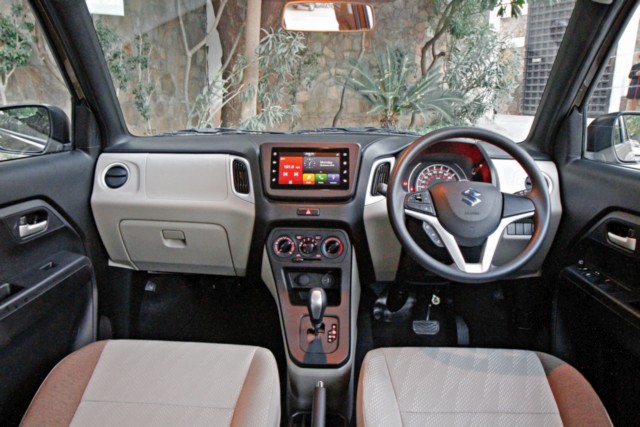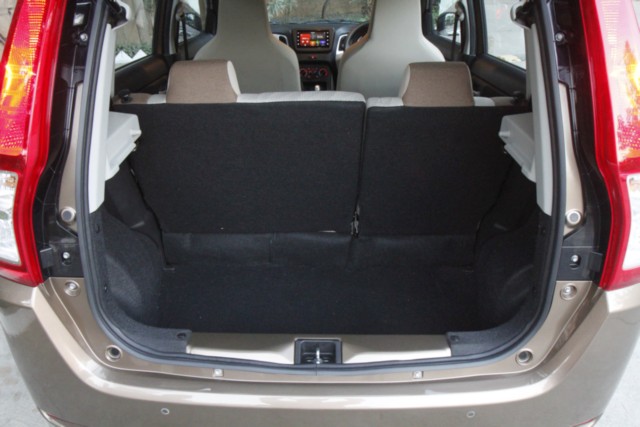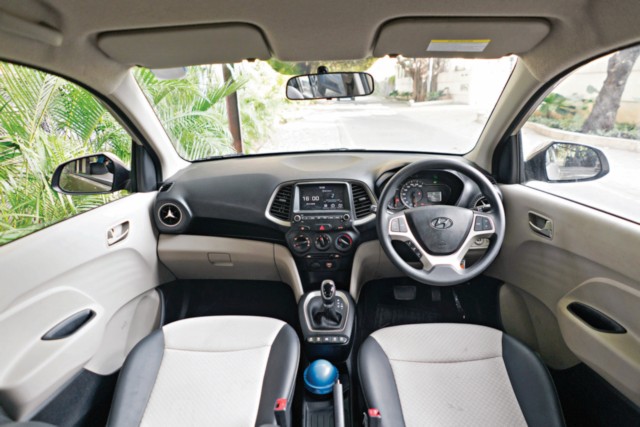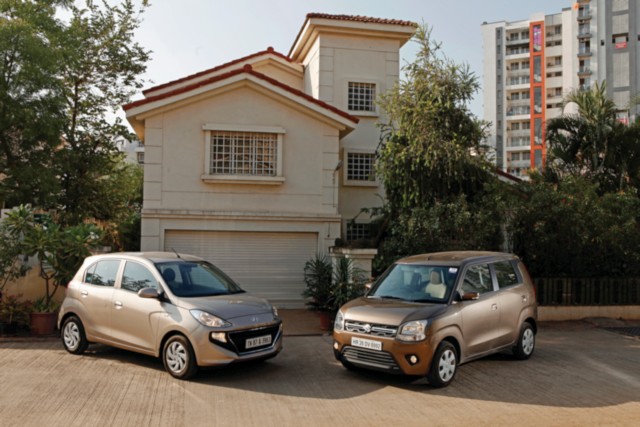
The Maruti Suzuki WagonR’s box shape means it liberates a lot of space inside. The Heartect platform has led to the body being longer by 35 millimetres but, more significantly, 130 mm wider. Even being lower by 25 mm doesn’t lead to a drop in headroom, which is still among the highest in pretty much any segment. The quality of materials seems to have improved over previous iterations but there is still a lot of room for improvement in fit-and-finish. I have a habit of drumming my fingers on the steering wheel with my kind of music playing and, in here, I had to deal with some tacky vibration which just didn’t feel nice. That apart, the dashboard, new touchscreen unit, and other panels have an adequate feel considering the price. The tilt-adjustable steering column, rear parking sensors, and a rear wiper with washer are all pluses and features that the Santro loses out on, unless you opt for the top-spec manual Asta trim level.
The seats are upholstered in fabric that, potentially, seems won’t age very well, but the support from them is commendable. The generous seat bases offer good thigh support and overall ergonomics are good as well. The fixed front head-rests are a negative in my book but being tall help their cause a little. Controls are well-positioned and ease of access for various functions on the centre console, behind the steering wheel, and on the door-panel is appreciated. The rear space is also excellent and, even with the front seat taken all the way back, there is enough room to accommodate a passenger. That also works the other way around, with the front seat capable of accommodating a passenger even when taken all the way forward, liberating a lot of room for the rear occupant. The boot volume, too, is huge — for its segment — at 341 litres and is the result of the car being a prime example of optimizing space.

The Hyundai Santro has no shortage of head-room and overall space, but it definitely has lesser rear passenger room. The quality of materials is, however, an outstanding trait. Hyundai have trumped Maruti Suzuki in this department and by a country mile. The quality of plastic, trim accents, and robust feel cannot be denied. There is an air of quality and it feels more like a smaller i20 than a budget hatchback. The instrumentation behind the steering wheel is simple, functional, and easy to read and the centre touchscreen works well, too. However, the lack of features in the not top-spec Sportz AMT variant is telling. No rear parking sensors or rear wiper with washer are just the beginning and the fact that the front windscreen washer operates independently of the wiper function is simply puzzling in this day and age. Where the Santro scores brownie points is simply in the overall feel of the cabin and the quality of materials used.

In the interior department, it’s down to whether a premium feel is preferred over multiple features. Both cars are extremely practical and offer a number of storage spaces and goodies. Conversely, both cars have fixed head-rests front and rear; theoretically making it unsafe for adults or tall children to be seated in the rear, especially in the event of a rear impact. However, until the Santro gets an Asta Auto variant, the checklist battle is won by the WagonR.





















Leave a Reply